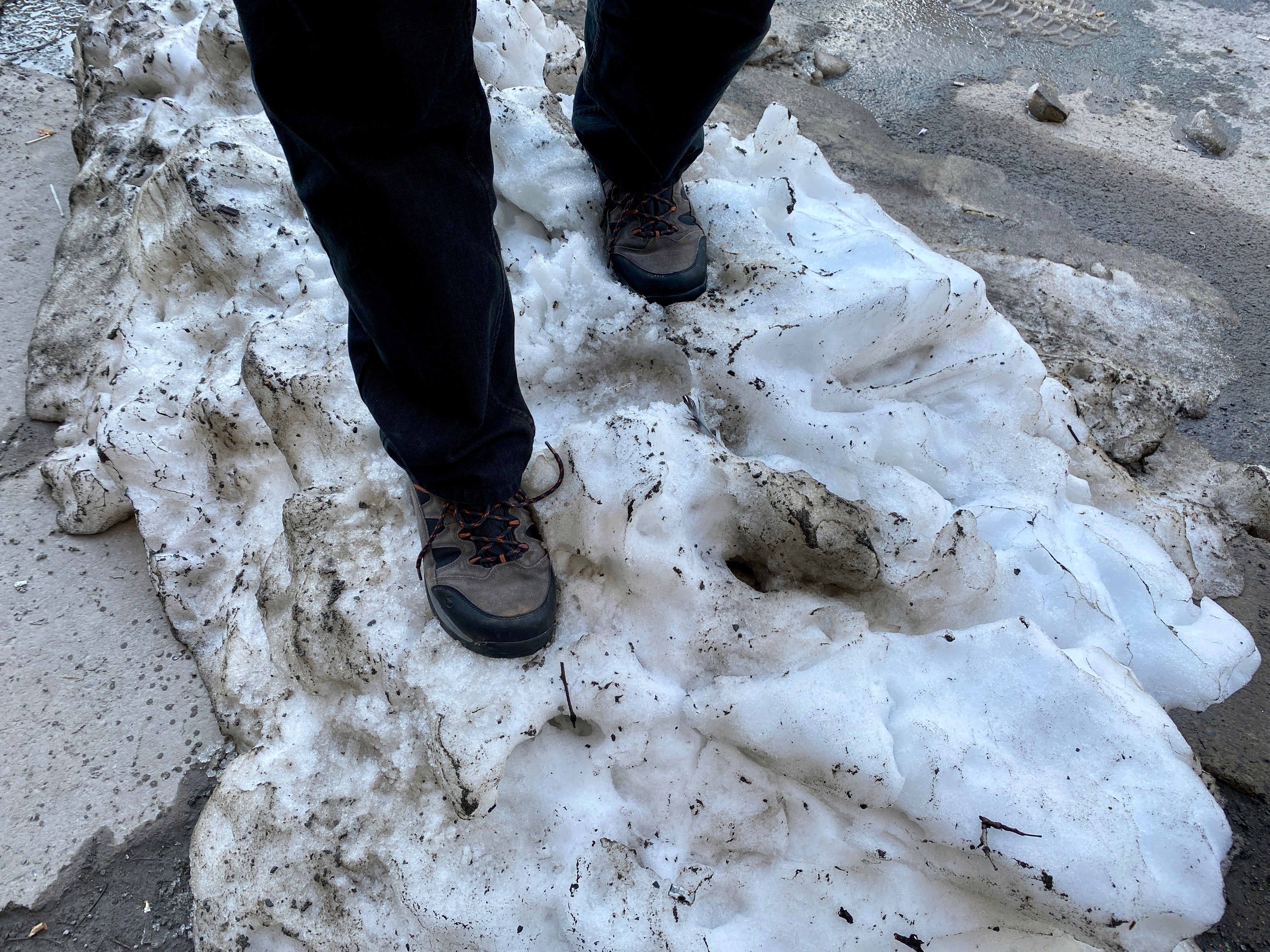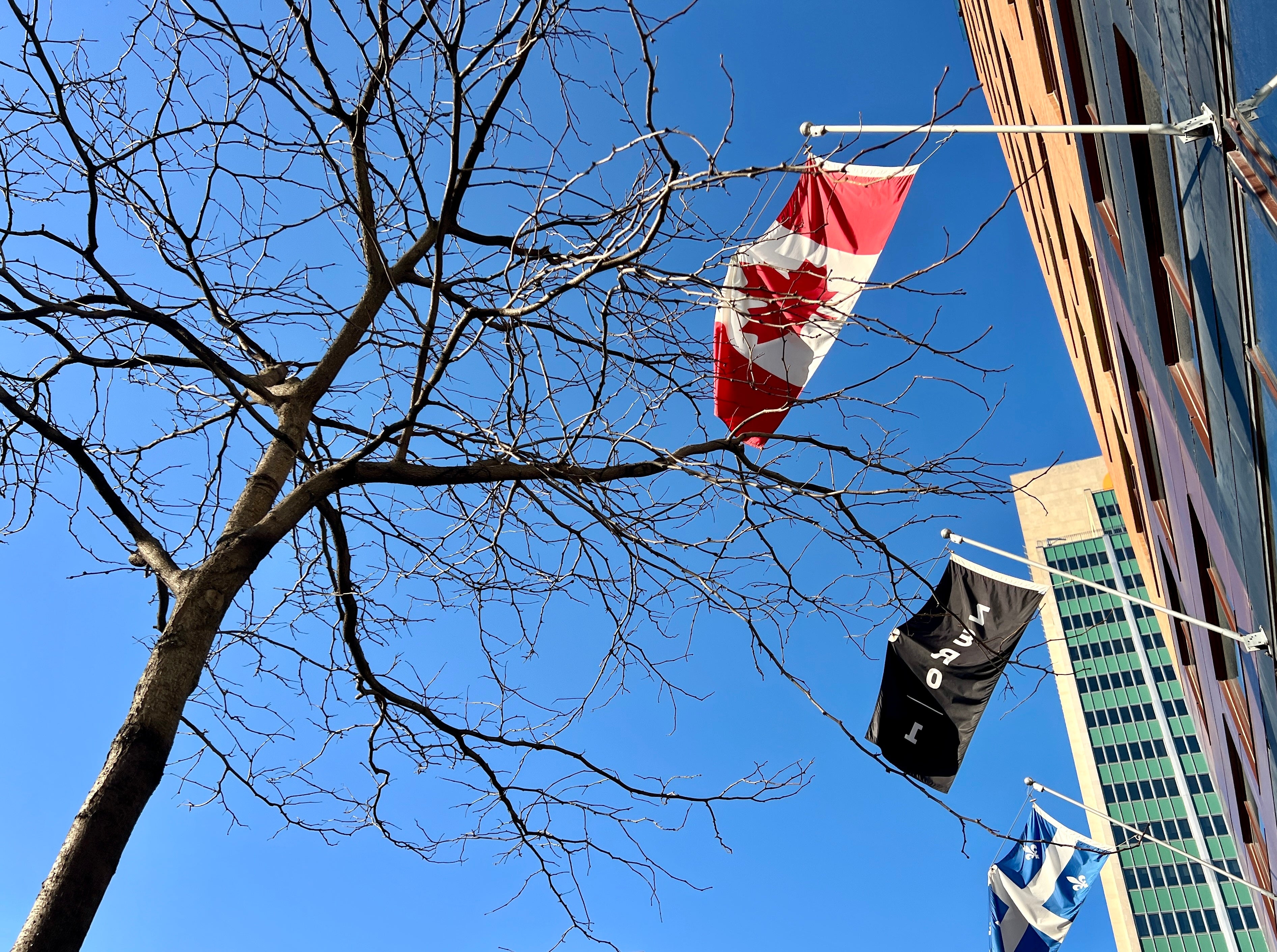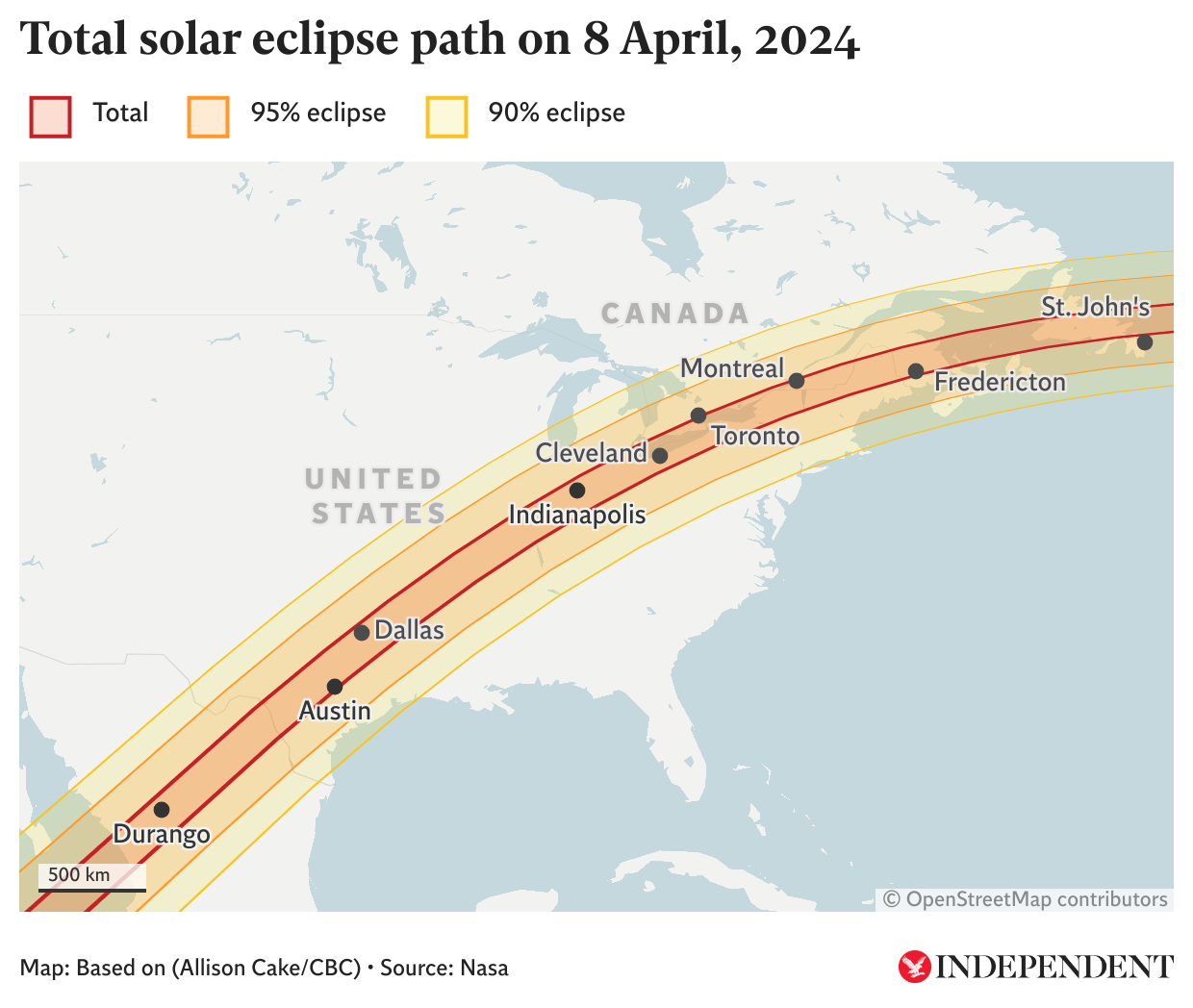Total solar eclipse 2024 highlights: Rare phenomenon darkens North America’s skies
Path of totality spans parts of Mexico, eastern Canada and 13 US states, as experts give information about how to safely see it and take pictures
Your support helps us to tell the story
From reproductive rights to climate change to Big Tech, The Independent is on the ground when the story is developing. Whether it's investigating the financials of Elon Musk's pro-Trump PAC or producing our latest documentary, 'The A Word', which shines a light on the American women fighting for reproductive rights, we know how important it is to parse out the facts from the messaging.
At such a critical moment in US history, we need reporters on the ground. Your donation allows us to keep sending journalists to speak to both sides of the story.
The Independent is trusted by Americans across the entire political spectrum. And unlike many other quality news outlets, we choose not to lock Americans out of our reporting and analysis with paywalls. We believe quality journalism should be available to everyone, paid for by those who can afford it.
Your support makes all the difference.A total eclipse of the Sun plunged a stretch of North America into darkness on Monday, with millions of spectators across the US, Mexico and Canada hoping to catch a glimpse of the rare event.
It was North America’s biggest eclipse crowd ever, with the path of totality crossing directly over 44 million people.
More were drawn in from across the world thanks to the lure of clear skies and up to four and a half minutes of midday darkness in some places.
Almost everyone in North America was guaranteed at least a partial eclipse, weather permitting.
The best weather was seen in Mexico and at the tail end of the eclipse in Vermont and Maine, as well as New Brunswick and Newfoundland.
“Cloud cover is one of the trickier things to forecast,” National Weather Service meteorologist Alexa Maines explained at Cleveland’s Great Lakes Science Centre on Sunday. “At the very least, it won’t snow.”
Clouds could block the view in every metro area, forecasts warn
The weather might not let the eclipse take all the attention. Forecasts warn that every major metro area could have skies covered in clouds, which might ruin the view somewhat.

Solar eclipse 2024: Clouds could block view in every metro area
Large hail and strong, damaging wind gusts also expected in some areas
Even if the sun itself is covered, however, you should get some of the feeling as the skies go dark and everything becomes briefly a little colder.
Where and when will the eclipse be visible?
According to NASA, the April 8 eclipse will begin over the South Pacific, with its path reaching Mexico’s Pacific coast at around 11:07 a.m. Pacific Time before entering the United States in Texas.
Its path then takes it through Oklahoma, Arkansas, Missouri, a tiny piece of Tennessee, Illinois, Kentucky, Indiana, Ohio, a tiny piece of Michigan, Pennsylvania, New York, Vermont, New Hampshire and Maine.
The path then enters Canada in Ontario and journeys through Quebec, New Brunswick, Prince Edward Island and Cape Breton, exiting continental North America on the Atlantic coast of Newfoundland, Canada, at 5:16 p.m. Newfoundland Time. A partial eclipse is due to be visible for people in all 48 contiguous U.S. states.
What will you see during an eclipse?
A total solar eclipse unfolds in several distinct stages.
It starts with a partial eclipse phase as the moon begins to pass between Earth and the sun, partially blocking it and leaving the sun looking like it has a crescent shape.
In the subsequent Baily’s Beads phase, points of light from the sun shine around the moon’s edges because of the irregular lunar topography, producing small beads of light.
In the diamond ring phase, a single bright spot appears along the lunar edge even as the sun’s atmosphere leaves a ring of light around the moon. The effect resembles the appearance of a diamond ring. This phenomenon precedes totality.
After totality, the other phases repeat as the moon keeps moving along its path until the eclipse ends.
When will the next eclipses arrive?
People in various parts of the world will get to experience more eclipses in the coming months and years, according to NASA.
An annular solar eclipse will occur on Oct. 2 of this year, visible in South America, with a partial eclipse visible in South America, Antarctica, the Pacific Ocean, the Atlantic Ocean and North America.
A partial solar eclipse will occur on March 29, 2025, visible in Europe, Asia, Africa, North America, South America, the Atlantic Ocean and the Arctic Ocean.
A partial solar eclipse will occur on Sept. 21, 2025, visible in Australia, Antarctica, the Pacific Ocean and the Atlantic Ocean.
An annular solar eclipse will occur on Feb. 17, 2026, visible in Antarctica, with a partial eclipse visible in Antarctica, Africa, South America, the Pacific Ocean, the Atlantic Ocean and the Indian Ocean.
The next total solar eclipse will occur on Aug. 12, 2026, visible in Greenland, Iceland, Spain, Russia and a small portion of Portugal, with a partial eclipse visible in Europe, Africa, North America, the Atlantic Ocean, the Arctic Ocean and the Pacific Ocean.
How do you safely watch an eclipse?
Experts warn that it is unsafe to look directly at the bright sun without using specialized eye protection designed for solar viewing. Viewing an eclipse through a camera lens, binoculars or telescope without making use of a special-purpose solar filter can cause severe eye injury, according to these experts.
They advise using safe solar viewing glasses or a safe handheld solar viewer, noting that regular sunglasses are not safe for viewing the sun. The only moment it is considered safe for people to remove eye protection during a total solar eclipse is the brief time when the moon completely blocks the sun’s surface.
Royal Institution jokes about eclipse
The Royal Institution – the centuries old organisation that has fostered some of the greatest scientific minds in history – has a joke for you:
Snow lying in Montreal ahead of eclipse
Montreal is the only big city on the path of totality with near-certain clear skies. The Canadian government is predicting unbroken sunshine until at least 6pm, local time, with the eclipse passing over for 90 seconds at 3.27pm. The temperature is expected to reach 16C. The weather is unusual for early April. Montreal experiences extreme cold, and is only slowly emerging from winter.

Snow is piled high on some city streets, and weather records for the corresponding date in earlier years showing a high of –2C in 1977 and, the following year, three inches of snow.

Total solar eclipse, as interpreted using only breakfast items
Simon Calder, travel correspondent of The Independent, arrived in Montreal late last night after buying the last economy class seat on the “Eclipse express”: British Airways flight 95, which arrived in the Canadian city at 9.05pm, local time.
Over breakfast at Eggspectation, a restaurant in downtown Montreal, he performs an exclusive interpretive prediction of the scenes later in the day – using only the Quebecois speciality, poutine.
‘All or nothing’ says UK eclipse guru
Dr John Mason, who has led astronomical tours to view total solar eclipses for three decades, says: “You can’t observe all the wonders of totality unless you’ve got 100 per cent.
“Even when the sun is 99 per cent eclipsed, that 1 per cent is incredibly bright and gives out a lot of light. He was speaking on The Independent’s daily travel podcast ahead of the event.
When deciding where to lead his eclipse disciples, Dr Mason studies decades of weather records to maximise the chances of clear skies. But, he warns: “The statistics for the weather are only a guide.
“On the day, it could be totally different. You could find that there could be a cloudy day in Texas, and it could be clear up in the Northeast, in Maine. It’s only a guide.”
The location Dr Mason believes may attract the most viewers: Niagara Fall, on the US-Canada border.
“I could imagine huge numbers of people making their way to Niagara Falls because it’s got its cachet of an amazing view and and the total eclipse as well.”
For anyone who misses the 8 April 2024 total solar eclipse, the next will be on 12 August 2026, with northern Spain and the Balearic islands in the zone of totality.
Solar eclipse 2024 live: Map shows path of totality across North America
Roughly 44 million people live under the path of totality, with hundreds of millions more getting a chance to see a partial solar eclipse today.
We have a map showing the full path of the total solar eclipse, which crosses over some major metropolitan areas in its journey from the west coast of Mexico to the east coast of Canada.
Major cities beneath the path of totality include Durango, Austin, Dallas, Indianapolis, Cleveland, Toronto and Montreal.
You can read more about the eclipse’s path here.


Join our commenting forum
Join thought-provoking conversations, follow other Independent readers and see their replies
Comments